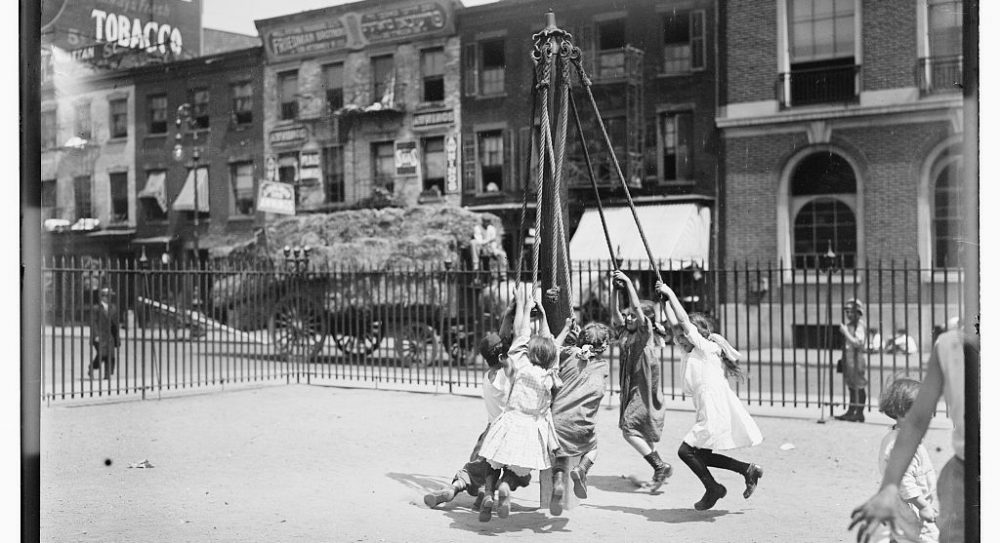As Stephen Mintz (2016) explains, one myth of childhood is that “childhood is the same for all children” when in fact “every aspect of childhood is shaped by class–as well as by ethnicity, gender, geography, religion, and historical era..[childhood] is better understood as a life stage whose contours are shaped by a particular time and place” (Mintz 2016).
Children from Black families (Simmons 2015), Japanese families (Tong 2004), immigrant families from Europe (Diamond 2009), and girls (Gagen 2004) all experienced childhood differently. Often times these groups of children were held up to a standard that they could never achieve because of racism and prejudice within American society. At this time in America the ideal child was the White young boy, and there were many institutional process implemented to protect this group of children as well as informal rules that gave many privileges to young White men. Institutional benefits included programs like playground reform, the introduction of the YMCA, and the Boy Scouts which were all attempts to defend the future of masculinity in America (Gagen 2004, 25-26). In more informal settings White males explored their privilege by acting as “enforcers” of racialized social norms (Simmons 2015). Together these institutional benefits or protections as well as informal social norms unfairly positioned young White males above all other children.
Childhood in the late 19th and early to mid 20th centuries was highly racialized, highly gendered, and also different based on national origin. The purpose of childhood at this time was to develop well adjusted youth that would become productive American citizens. However, the ideal child, and the ideal vision of the American future citizen was distinctly White and certainly male oriented. The preservation and encouragement of White males in America at this time was of paramount concern. Gagen (2004) explains that both organizations like the Boy Scouts and the YMCA as well as spaces such as playgrounds were essential places of the production of the American White male youth identity. In addition, these spaces served as Americanization tools for immigrants and minorities. Drawing on the work of Stanley Hall, Gagen writes, “Through play and physical education, children, especially boys, would be inoculated against future weakness and maladjustment to the urban environment” (Gagen 2004, 426). Childhood at this time was viewed by society as a formation period for future American citizens. However, through institutional practices and informal rules of place, children at this time where being socialized to understand unfair and damaging social hierarchies based on national origin, race, and gender that form American society.
Recess fits into this broader theme of childhood development and socialization because at the time in the late 19th to early 20th century the practice of recess and the creation of play-spaces in the urban sphere where pressing issues as immigrants continued to flow in from Europe and urban public space declined. Of chief concern was the development of healthy children and recess and play were seen as ways to combat many childhood aliments and also develop a strong youth population. However, recess was a highly gendered practice in which boys were encouraged to develop their rugged nature and become strong American men, while girls were pushed more towards activities that would protect their innocence and purity (Gagen 2004).
